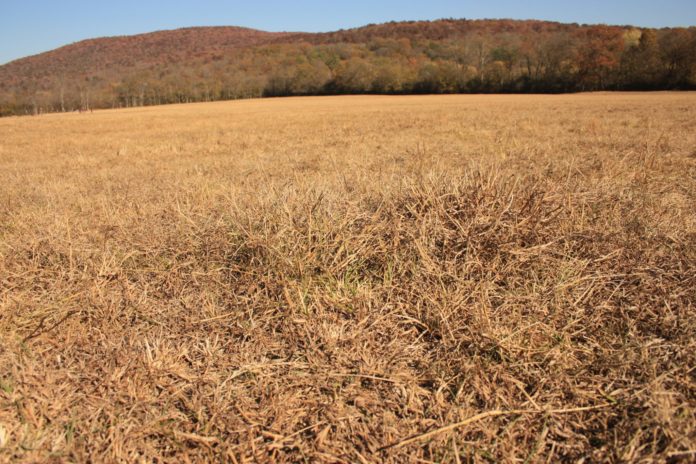AUBURN, Ala. – Conditions in Alabama are hot and dry. Strings of days with record-breaking heat have made September 2019 one of the hottest Septembers on record. The heat and drought are nothing new, though.
While only .2% of the state is in extreme drought according to the U.S. Drought Monitor’s latest release, nearly 83% of the state is experiencing drought conditions.
Producers in the Wiregrass area have now had moderate and severe drought for eight weeks. A portion of Shelby County is experiencing extreme drought, after dealing with little to no rain for an extended period. Current forecasts indicate a statewide cooldown is on the way; however, there does not look to be any significant chance of rain in the forecast.
Drought Resources Available
Dry weather creates a diverse set of problems for farmers and producers. To help them make the best decisions possible, Alabama Extension has launched a new website focusing on drought related issues. Resources including livestock management, lawn and garden management, pond management and income management are available at www.alabamadrought.com. The website is adding new content daily as Alabama Extension professionals develop information to help homeowners and producers cope with the effects of drought on business and home life.
For additional information, or questions not addressed on the website, contact your local Extension office. The office can direct you to the appropriate person to address your needs.
Report Drought Conditions
The USDA, in partnership with the National Oceanic and Atmospheric Administration and the University of Nebraska in Lincoln has updated the U.S. Drought Monitor to include a reporting feature.
Citizen scientist reports can help U.S. professionals understand the effects of drought on specific areas. The reported information can assist in triggering drought response through USDA disaster relief and IRS tax provisions. These reports will also help state agencies make decisions regarding health and safety-related issues.
The data collection opportunity will allow farmers and homeowners to report conditions in their area. Access the reporting tool for to record the effects of the drought at the following link: http://droughtreporter.unl.edu/submitreport/
Alabama Extension professionals are also compiling reports for U.S. Drought Monitor officials. Alabama producers can email Kim Mullenix, Kent Stanford or Leanne Dillard with the following information.
- Rainfall totals by week or month from a particular location.
- Evidence of hay feeding.
- Cost of feeding hay per head/day or farm totals.
- Reports of alternative water sources being utilized.
- Number of days since measurable rainfall.
- Delayed planting of winter annual forages due to drought.
More Information
For more information, visit Alabama Extension online at www.aces.edu or contact your local Extension office (https://ssl.acesag.auburn.edu/directory-new)



















